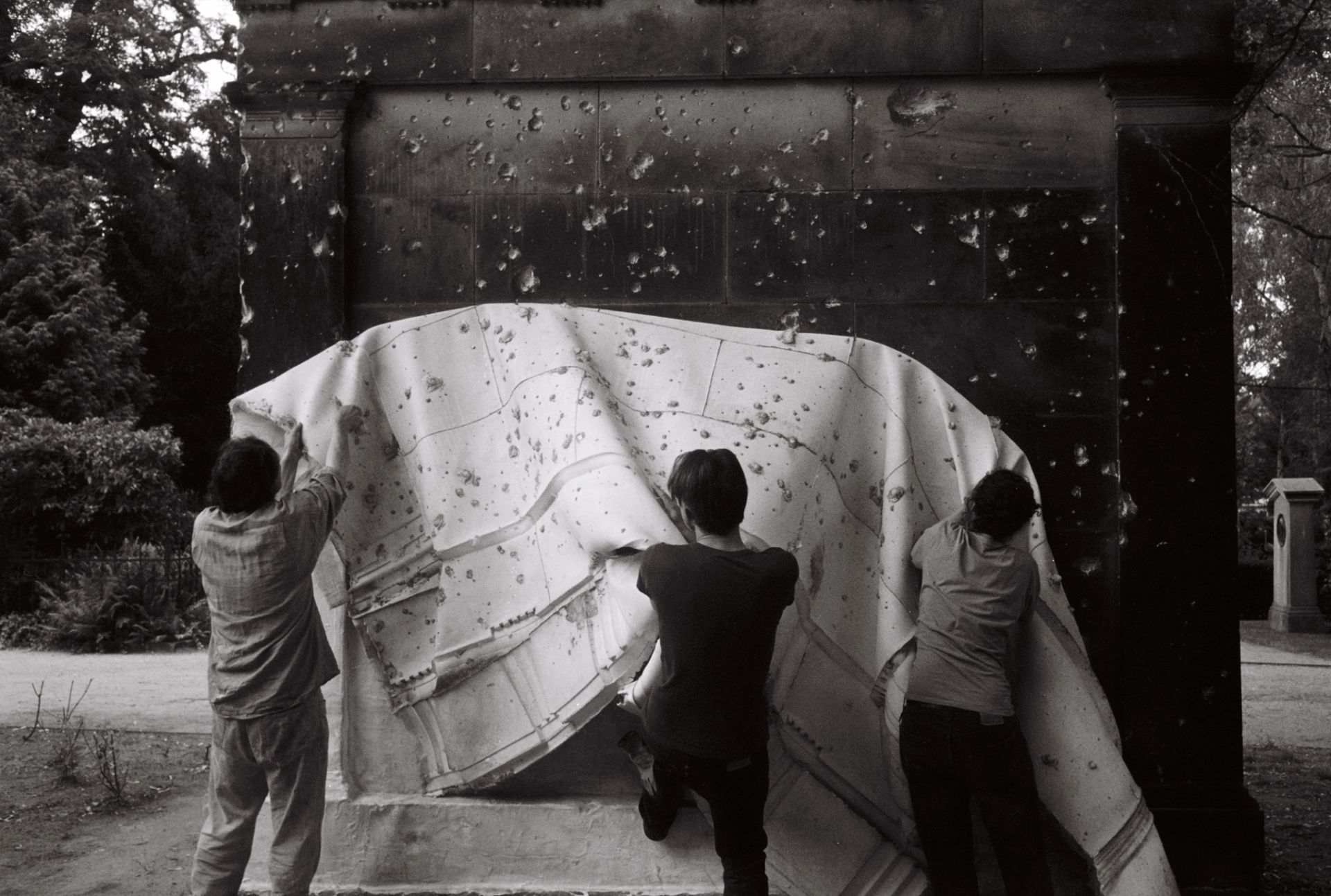The series Berlin Facades by sculptor Asta Gröting focuses on those facades in Berlin that still bear traces of the Second World War, in the form of bullet holes. The artist captures the damaged walls sculpturally by making silicone molds of them, depicting history from the moment the bullet was hit to the present time. Dust, dirt and even graffiti are absorbed by the carrier material making monumental negative prints appear almost as if they were painted.
The bullet holes emerge from the heavy silicone skin like scars from history, the material reconstructs injuries as architectural traces and transfers them into abstract images. “I want to look out into the world from these destroyed walls and facades, as if I could look at myself in the mirror” says Asta Gröting.
KOOZ What prompted the project Berlin Fassaden?
AG The contemporary strategy of Berlin whereby the old, damaged facades are replaced by slick, meaningless surfaces.
KOOZ What questions does the project raise? Which does it address?
AG The literal and metaphorical displacement created through the removal and sanitisation of the damaged facades and the trauma that remains after every war.
KOOZ What is the ultimate objective of the work?
AG To see the beauty of a damaged facade. To imagine oneself viewing the world as if from within the facade itself. You are looking outward from inside. Standing in front of the negative impressions of the facade, your gaze is directed from inside the wall to the outside, to the world. I wanted to rediscover the hidden objects of the past and to bring them to the surface.
KOOZ How does the project situate itself within your artistic practice?
AG In almost all my works, sculptures and videos, I have turned the inside out and brought it to the surface.
KOOZ The sculptures are often referred to as slow-exposure photographs, could you expand on this idea?
AGThe negatives of the facades work like a single long exposure photograph, from the moment the bullet impacted the facade in April 1945 until the moment the silicone was applied in the summer of 2017. When the silicon is applied to the facade, its stickiness captures everything. The graffiti, the dirt, the dust, the plaster. Everything is conserved to last detail. The bullet holes are inverted and protrude out towards the viewer.
KOOZ In the age of urban renewal - how and to what extent can the project be considered as an act of preservation?
AG I imagine a forward-thinking utopian city which allows itself a conversation with the past. Memory is not a single moment but rather a recurrence which occurs again and again. The objects of the past want to be rediscovered continuously and brought to the surface.
KOOZ How did you research the urban fabric of Berlin and define the sites for the intervention?
AG I have been walking the streets of Berlin since the 1990s. I see the bullet holes and imagine what happened in 1945.How were the bullet holes caused? And what does this mean psychologically until today?
KOOZ What role does the publication hold in revealing the project and the preservation of this history?
AG I don’t want to talk about history. That’s boring. Besides, there is more than one story. It’s the traces of history which are of interest, how these traces speak to us and what sort of conversation this creates. Traces of the past are brought to the light, and our emotional and political relationships to them. To feel and see these traces, that’s what interests me. To see the past and to start from this point with a new awareness for the future.
KOOZ Where do you see the project developing?
AG It is finished. The more of the facades that disappear from the cityscape, the more they represent the disappearing and the literally pushed away.

Asta Gröting, Berlin Fassaden, Reinhardtstraße, Working process, 2016. Courtesy of the artist and carlier | gebauer, Berlin/Madrid. Asta Gröting, VG-Bild-Kunst, Bonn, 2024. Photo: Asta Gröting
Bio
Asta Gröting (1961, Herford) lives and works in Berlin. She creates works that translate psychological and social relations into physical forms. She inverts the lexicon of monumental sculpture to address absence and the physical and emotional gaps between people and things. She has had solo exhibitions at KINDL – Centre for Contemporary Art, ZKM Zentrum für Kunst und Medien, Lentos Kunstmuseum Linz, Henry Moore Institute, and MARTa Herford. She has participated in large-scale exhibitions, including Musée des Beaux-Arts, Paris, James-Simon-Galerie, Staatliche Museen zu Berlin, 22nd São Paulo Biennial, the 8th and 14th Biennale of Sydney, and the 44th Venice Biennale.





